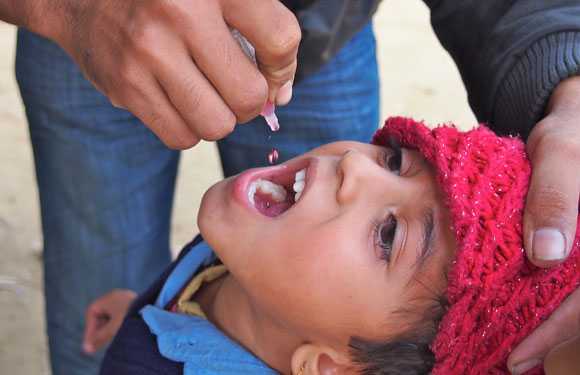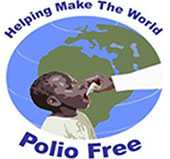Polio Eradication

Polio is a crippling and potentially fatal infectious disease. There is no cure, but there are safe and effective vaccines. Therefore, the strategy to eradicate polio is based on preventing infection by immunizing every child to stop transmission and ultimately make the world polio free.
In 1988, the World Health Assembly adopted a resolution for the worldwide eradication of polio. It marked the launch of the Global Polio Eradication Initiative (GPEI), spearheaded by national governments, CDC, Rotary International, WHO, and UNICEF, with substantial support from the Bill & Melinda Gates Foundation.
Eradicate Polio Now
Polio spreads from person to person invading the brain and spinal cord and causing paralysis (inability to move). Because polio has no cure, vaccination is the best way to protect people and is the only way to stop the disease from spreading. Today, polio continues to circulate in three countries: Afghanistan, Pakistan, and Nigeria.
Featured Stories
Strength in Numbers: Nigeria & CDC Work to End Polio

The question seems so simple: How do you finish the job when success seems so close? It’s being asked right now by public health officials in Nigeria, along with partners from CDC…
Vaccine Research Will Accelerate Eradication of Polio

The 21st century has seen a multitude of public health victories. Among them is the elimination of wild polio virus (WPV) in over 100 countries worldwide, thanks to successful vaccination programs…
More about Polio and Polio Eradication:
 The Global Polio Eradication Initiative is a public-private partnership led by national governments and spearheaded by the World Health Organization (WHO), Rotary International, CDC, and the United Nations Children’s Fund (UNICEF). Its goal is to eradicate polio worldwide.
The Global Polio Eradication Initiative is a public-private partnership led by national governments and spearheaded by the World Health Organization (WHO), Rotary International, CDC, and the United Nations Children’s Fund (UNICEF). Its goal is to eradicate polio worldwide.
- Page last reviewed: September 2, 2015
- Page last updated: September 2, 2015
- Content source:


 ShareCompartir
ShareCompartir
